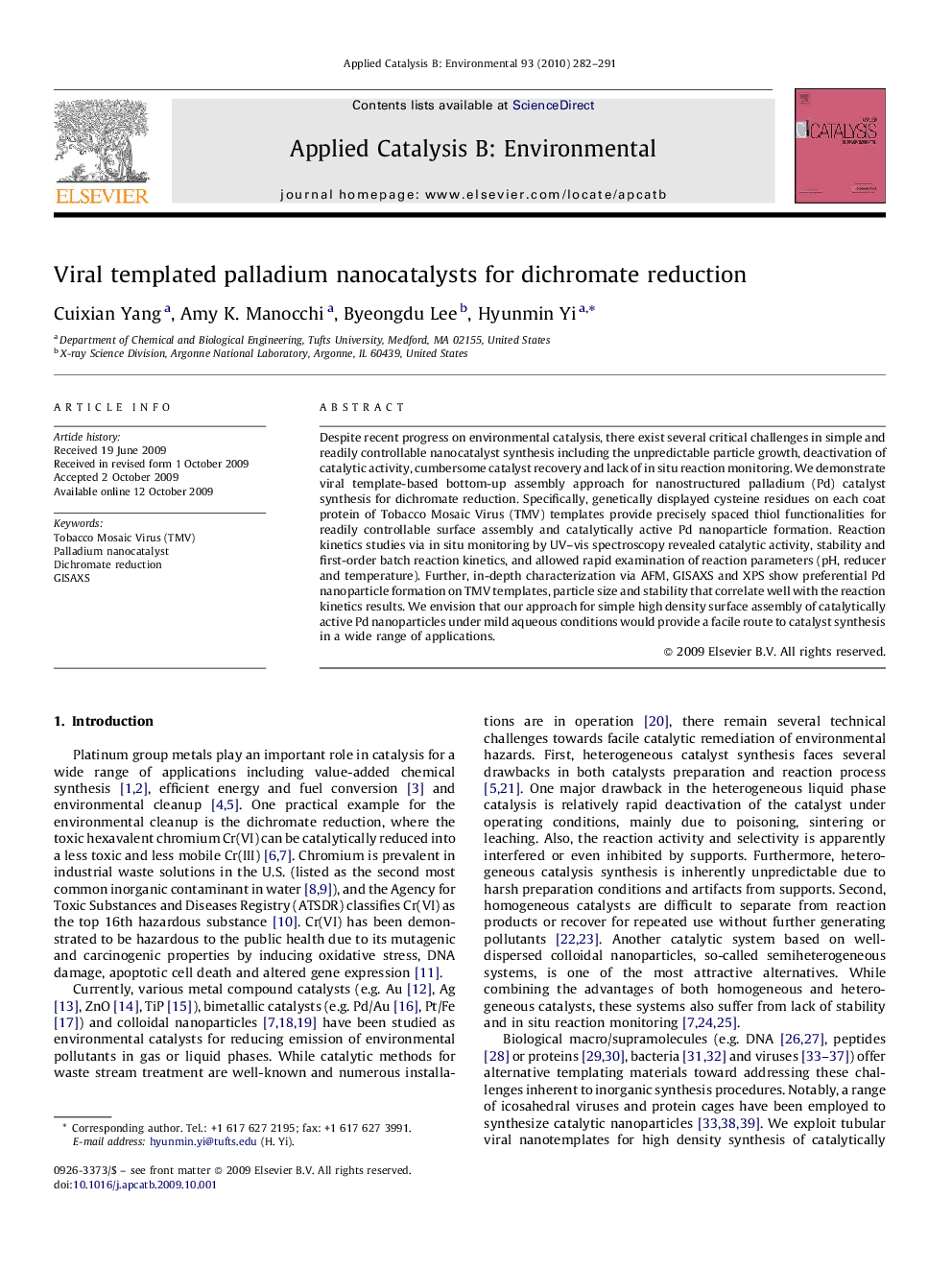| Article ID | Journal | Published Year | Pages | File Type |
|---|---|---|---|---|
| 47617 | Applied Catalysis B: Environmental | 2010 | 10 Pages |
Despite recent progress on environmental catalysis, there exist several critical challenges in simple and readily controllable nanocatalyst synthesis including the unpredictable particle growth, deactivation of catalytic activity, cumbersome catalyst recovery and lack of in situ reaction monitoring. We demonstrate viral template-based bottom-up assembly approach for nanostructured palladium (Pd) catalyst synthesis for dichromate reduction. Specifically, genetically displayed cysteine residues on each coat protein of Tobacco Mosaic Virus (TMV) templates provide precisely spaced thiol functionalities for readily controllable surface assembly and catalytically active Pd nanoparticle formation. Reaction kinetics studies via in situ monitoring by UV–vis spectroscopy revealed catalytic activity, stability and first-order batch reaction kinetics, and allowed rapid examination of reaction parameters (pH, reducer and temperature). Further, in-depth characterization via AFM, GISAXS and XPS show preferential Pd nanoparticle formation on TMV templates, particle size and stability that correlate well with the reaction kinetics results. We envision that our approach for simple high density surface assembly of catalytically active Pd nanoparticles under mild aqueous conditions would provide a facile route to catalyst synthesis in a wide range of applications.
